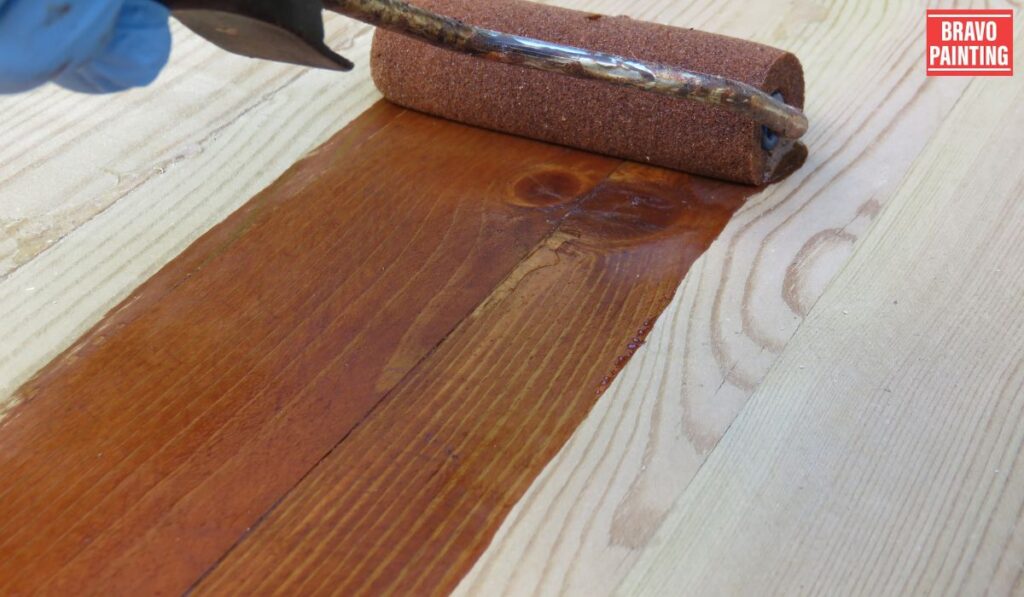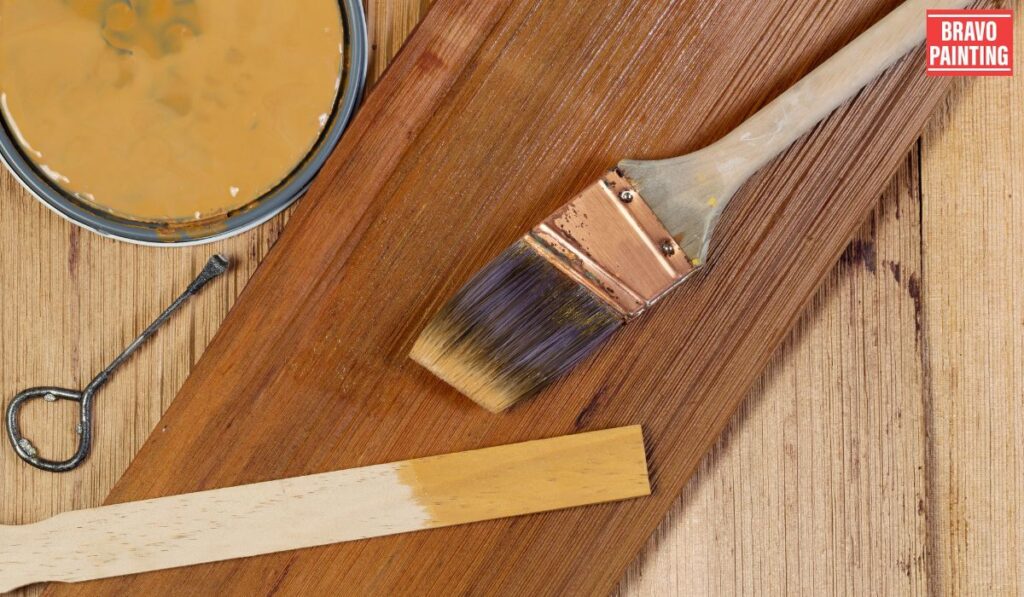When it comes to outdoor aesthetics, a well-maintained and aesthetically pleasing Wood can make all the difference.
Your wall serves a functional purpose by providing security and privacy and plays a significant role in enhancing the overall look of your outdoor space.
This is where a professional Wood-staining company can work wonders.
In this article, we will explore the world of Wood-staining companies and how they can help you preserve and enhance the beauty of your outdoor space.
Why Wood Staining Matters
Wood staining is not merely a cosmetic choice; it has far-reaching benefits that extend to your Wood’s longevity and appearance.
Let’s delve into why Wood staining matters:
- Protection from the Elements: Your wall is constantly exposed to the elements – sun, rain, wind, and snow.
Over time, this exposure can cause the wood to deteriorate.
Wood staining acts as a protective barrier, preventing moisture from seeping into the wood, which can lead to rot and decay.
- Enhanced Aesthetics: Staining your Wood is an effective way to improve its appearance.
The right stain can bring out the natural beauty of the wood, highlighting its grain and texture.
Paints come in various colors, allowing you to choose one that complements your outdoor décor.
- Longevity: Regular staining can significantly extend the life of your Wood.
It prevents the wood from warping, cracking, and splitting, ensuring that your wall stands strong for many years.
- Prevention of Pests: Stained wood is less susceptible to infestations by pests like termites.
It acts as a deterrent, protecting your investment.
The Science of Staining
Understanding the chemistry behind Wood staining can help you make an informed choice for your property.

Unlike paints that create a film on top, stains are designed to penetrate the wood’s surface.
There are two primary types of wood stains:
- Oil-Based Stains: These are known for their durability and penetration.
They provide a rich, natural finish.
However, they emit volatile organic compounds (VOCs), which can harm the environment.
- Water-Based Stains: These stains are more environmentally friendly as they have lower VOC content.
They dry faster and are easier to clean up.
However, they may not be as long-lasting as oil-based stains.
Choosing between these stains depends on your priorities – durability, environmental impact, and appearance.
The Process of Wood Staining
When you hire a professional Wood staining company, they follow a meticulous process to ensure the best results.
Here is an overview of the typical steps involved:
- Inspection: The first step is to inspect your Wood.
This helps the professionals identify any issues that need to be addressed before staining, such as loose boards, mildew, or dirt.
- Preparation: Proper preparation is crucial for a successful staining job.
This involves cleaning the Wood to remove dirt, mold, and old stains if present.
It may also include sanding or repairing any damaged areas.
- Staining Techniques: Once the wall is prepped, the staining process begins.
Professionals use various techniques, such as brushing, rolling, or spraying, to ensure an even stain application.
- Drying: After staining, the Wood needs time to dry.
The time required depends on the type of stain used and weather conditions.
It’s essential to avoid any contact with the wall during this phase.
- Cleanup: Professional staining companies take care of the cleanup, ensuring that your outdoor space is as clean as before the job began.
The Benefits of Hiring a Professional Wood Staining Company
While you may consider staining your Wood as a DIY project, there are compelling reasons to hire professionals for the job:
- Expertise: Professional staining companies have the knowledge and experience to choose the right stain and application techniques for your specific type of wood and weather conditions.
- Time and Effort: Staining a Wood can be time-consuming and physically demanding.
Hiring professionals saves you from the hassle and ensures the job is done efficiently.
- Quality Assurance: Professionals guarantee a high-quality finish.
They can avoid common staining pitfalls like streaks, drips, or uneven coverage.
- Enhanced Curb Appeal: A professionally stained Wood significantly enhances the curb appeal of your property.
It can leave a lasting impression on visitors and potential buyers.
DIY vs. Professional Services
If you’re considering whether to stain your Wood yourself or hire a professional, it’s essential to weigh the pros and cons:
DIY Staining:
- Cost-effective.
- You have control over the process.
- Suitable for small Woods.
Professional Staining:
- Expertise and experience.
- Saves you time and effort.
- High-quality results.
- Suitable for larger or more complex Wood projects.
Maintaining Your Stained Wood
Maintaining your stained Wood is crucial to ensuring it looks fresh and vibrant for years to come.
Here’s how to keep your wall in top condition:
- Routine Care: Regularly inspect your Wood for any signs of damage, like loose boards or mold.
When needed, clean the wall with mild soap and water and make repairs promptly.
- When to Re-Stain: The frequency of re-staining your Wood depends on the type of stain used, weather conditions, and wood type.
Generally, it would help if you planned to re-stain every 2-3 years to maintain its protection and appearance.
Eco-Friendly Staining Options
Many homeowners are looking for eco-friendly staining options as environmental concerns continue to grow.
Fortunately, several staining products are formulated to be environmentally conscious.
These stains are designed to have a lower ecological impact regarding VOC emissions and overall sustainability.
Conclusion
In conclusion, a Wood staining company can be your best ally in transforming your outdoor space.
The beauty, longevity, and environmental benefits make it a worthy investment.

So, why wait? Bring new life to your Wood and the outdoor ambiance today!
Frequently Asked Questions (FAQs):
Is Wood staining the same as painting a wall?
No, staining and painting a Wood are different processes. Staining preserves the natural texture of the wood, while painting covers it with a solid color.
How often should I stain my Wood?
Staining frequency depends on factors like the type of stain used, weather conditions, and wood type. Generally, it’s recommended every 2-3 years.
Can I stain my Wood in any color I want?
Stain colors are usually limited to earthy and wood-toned shades, but you can consult a professional to find the closest match to your desired color.
Is Wood staining safe for pets and plants?
Most modern stains are formulated to be pet and plant-friendly. However, consulting with the staining professionals is an excellent idea to ensure you choose the right product.
Do all Wood staining companies offer eco-friendly options?
No, not all companies offer eco-friendly staining options. Inquiring about this and choosing a company that aligns with your environmental values is essential.
Will Wood staining protect my wood from pests and rot?
Yes, a high-quality stain can act as a protective barrier against pests and wood rot, enhancing the lifespan of your Wood.
What is the cost range for professional Wood staining services?
The cost varies based on factors such as the Wood’s size, the type of wood, and the stain chosen. On average, it can range from $500 to $2,000.
How long does it take to stain a Wood professionally?
The time required depends on the size and condition of the Wood, but it usually takes one to three days.
Can I stain a Wood by myself if I have no prior experience?
It’s possible, but it’s advisable to consult professionals for guidance and use quality equipment and products.
Is Wood staining a one-time process, or does it require regular maintenance?
Staining is not a one-time process. You must re-stain your Wood every 2-3 years to maintain its appearance and protection.



